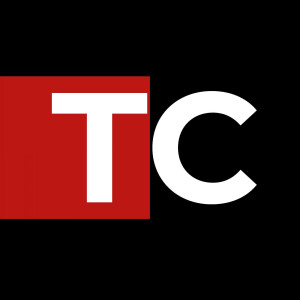Watch or listen to the interview below.
The distinction between OT and IT is often blurry, leading to confusion. OT is the unsung hero of many industries and plays a crucial role in enhancing efficiency, safety and reliability. So, what is OT, and how does it differ from IT?
OT encompasses the hardware and software systems responsible for monitoring and controlling physical processes and industrial operations. In essence, OT manages the “things” in the internet of things (IoT). Conversely, IT focuses on processing, storing and transmitting data, predominantly utilising computers, networks and software for decision-making and business processes.
While both IT and OT share similarities such as network connectivity and data exchange, their objectives and priorities diverge. IT prioritises data integrity, confidentiality and availability, while OT emphasises reliability, availability and safety of industrial processes.
The primary goals of OT include:
• Improving operational efficiency through automation, real-time adjustments and equipment health monitoring.
• Enhancing safety by controlling processes to prevent accidents and respond to emergencies.
• Increasing reliability with systems designed for harsh industrial environments.
• Enabling predictive maintenance using sensors and data analytics to anticipate equipment failures.
• Ensuring product or service quality by controlling production parameters to meet predefined standards.
OT drives various industries, including manufacturing, energy, utilities, transportation and healthcare, ensuring efficient and safe operations. For instance, in manufacturing, OT automates production lines to optimise productivity and quality, while in healthcare, it oversees medical equipment and ensures the reliability of medical procedures.
The OT field offers diverse job roles, each requiring specialised skills. OT engineers design, implement and maintain control systems and automation solutions. OT technicians troubleshoot and maintain systems. Cybersecurity specialists protect critical infrastructure from cyber threats. Data analysts gather and analyse data for efficiency and predictive maintenance. Control systems architects design the overall architecture of OT systems to meet specific industrial requirements, offering exciting opportunities for those with the right skills and passion for innovation.
The convergence of IT and OT brings about numerous benefits but also introduces new challenges, particularly in cybersecurity. A report found that 75% of OT organisations experienced at least one intrusion in the last year. A successful cyberattack on OT can result in production disruptions, safety hazards, environmental damage and economic losses. Therefore, ensuring the security of OT systems is crucial not only for business operations but also for public safety and national interests.
Robust cybersecurity measures include network segmentation, regular updates, access controls, monitoring, employee training and incident response plans. Here are some practical tips for OT security:
• Implement asset inventory and segmentation and employ micro segmentation and virtual patching solutions.
• Collaborate across IT, OT and production teams to assess cyber and production risks and inform the chief information security officer.
• Develop a vendor and OT cybersecurity platform strategy, considering a wide portfolio of solutions.
• Incorporate cybersecurity awareness education and training for all computer and mobile device users.
For more, visit https://techcentral.co.za/. TechCentral
More Episodes
TCS+ | CYBER1 Solutions on data and identity governance
 2024-03-13
2024-03-13
TCS+ | How Workday solutions are helping supercharge Adcorp
 2024-03-12
2024-03-12
TCS Legends | Duarte da Silva on Alan Knott-Craig, Bill Venter, Roux Marnitz and Jens Montanana
 2024-03-04
2024-03-04
TCS+ | Protecting company data, without impacting productivity
 2024-02-22
2024-02-22
TCS+ | Calybre: a new-age consultancy for ‘data people’
 2024-02-20
2024-02-20
TCS Legends | Duarte da Silva on five South African tech legends
 2024-02-19
2024-02-19
TCS | Pretoria firm Hydrox Holdings in global hydrogen 'breakthrough'
 2024-02-09
2024-02-09
TechCentral announces TCS Legends
 2024-02-04
2024-02-04
TCS+ | A look at the future of networking
 2024-01-26
2024-01-26
TCS | Datacentrix CEO Ahmed Mahomed on the Convergence Partners deal
 2024-01-22
2024-01-22
TCS+ | Guardian Eye’s AVA brings affordable telemedicine to the workplace
 2023-12-12
2023-12-12
TCS | Pheello Maboea on Kena Health winning App of the Year
 2023-12-11
2023-12-11
TCS+ | KnowBe4 looks at cybersecurity trends for 2024
 2023-12-07
2023-12-07
TCS | Starlink in South Africa – separating fact from fiction
 2023-12-05
2023-12-05
TCS | GG Alcock on the digitisation of the township economy
 2023-12-04
2023-12-04
TCS | Revix founder Sean Sanders on the creation of Altify
 2023-12-01
2023-12-01
TCS+ | OneTrust’s Joseph Byrne: privacy risk management done right
 2023-11-29
2023-11-29
TCS+ | Ricoh – safe and secure role in today’s digital ecosystems
 2023-11-27
2023-11-27
TCS+ | NEC XON on going toe to toe with cybercriminals
 2023-11-22
2023-11-22
TCS | OneCart CEO Aidan Johnson on SA’s on-demand shopping boom
 2023-11-16
2023-11-16
Create your
podcast in
minutes
- Full-featured podcast site
- Unlimited storage and bandwidth
- Comprehensive podcast stats
- Distribute to Apple Podcasts, Spotify, and more
- Make money with your podcast
It is Free
You may also like

Insight Story: Tech Trends Unpacked


Zero-Shot


Fast Forward by Tomorrow Unlocked: Tech past, tech future


Lex Fridman Podcast


Elliot in the Morning


- Privacy Policy
- Cookie Policy
- Terms of Use
- Consent Preferences
- Copyright © 2015-2024 Podbean.com




 iOS
iOS Android
Android